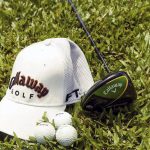As the summer of 2009 nears an end, paddlesports manufacturers are pleasantly surprised by the state of the market. Sales of boats and accessories have clearly been affected by the economic downturn, but industry executives those who attended OR Summer Market and those who did not – are optimistic. Much of this optimism is being fueled by a better than expected 2009 season.
Jim Miller, director of marketing at Werner Paddles, points to a late shift in weather as a savior to the season. “The market continues to surprise everyone,” Miller told The B.O.S.S. Report. “Early spring we saw a lot of orders pushed out, but once the weather turned to summer, thats made a huge difference for us. Instead of pushing orders out, they were pulling them in and adding on to their preseason orders. The season started late and we hope it will continue into the fall.”
Sue Rechner, CEO of Confluence Watersports, said that overall, the brands under the Confluence umbrella are showing some growth this year. “Generally speaking, we are pretty pleased. Our business is ahead of last year,” she reported.
Sue Rechner, CEO of Confluence Watersports, said that overall, the brands under the Confluence umbrella are showing some growth this year. “Generally speaking, we are pretty pleased. Our business is ahead of last year,” she reported.
Josh Simpson, Watersports division manager for Sea to Summit, suggests new concepts in paddlesports help drive sales. “Paddlesports has reached a certain level of maturity. The biggest change we are seeing is that the growth in paddlesports is coming from variations of the core sport itself. Were seeing a lot of growth in kayak fishing and stand up paddling,” he said.
Sales of whitewater kayaks continue to decline and it has been a market share battle during a difficult year.
Eric Jackson, founder of Jackson Kayaks, said that his business is thriving. He explained that Jackcson Kayaks is growing, but he is seeing more and more evidence that whitewater kayaking is a shrinking sport.
“The business is growing rapidly and dying all at the same time,” Jackson said to BOSS. “It just depends on who you are and what you are doing in the marketplace. Whitewater is a community. Whitewater kayaks cant be sold as a commodity, period.”
While some sub-categories may be growing and others are shrinking, most executives feel like the major boat brands are still competing for a larger piece of a shrinking pie. The overall paddlesports market isnt adding new participants.
Scott Forristall, Johnsons new business director for watercraft, said, “Up until this year, the category appeared to be growing at a 2-3% rate. Thats relatively small. There is definitely a grab for market share between competitors. Everyone is copying everybody elses boat and trying to grab price point market share. The biggest push with manufacturers is to go after market share with existing paddlers.”
Andy Zimmerman, CEO of Legacy Paddlesports, sees overcapacity discounting as issues. “Its been a challenging season for everybody,” he told BOSS. “The biggest challenge in our industry right now is overcapacity and I see competitors addressing that. Everything has its ups and downs. Ive been in paddlesports industry for 25 years and Im bullish on the growth opportunity, but I still have concerns about overcapacity and unhealthy competition such as putting more product out there at discounted prices which degrades the whole perceived value of kayaks.”
Simpson, who has been on the road meeting with retailers since Outdoor Retailer Summer Market, sees commitment to the category at specialty retailers, “The consensus is that paddling is a vital part of a retailers business,” he observed. “Whether they are up or down I dont hear anyone talking about getting out of paddling. They are looking for new ways to grow the business. They arent standing still. They are investing in new brands and ideas. Putting things on sale isnt working.”
First seen at Outdoor Retailer as a fringe sport and in limited numbers a few years ago, stand up paddling, or SUP, has moved from the fringes of paddlesports onto center stage. More and more manufacturers are offering stand up paddling models and retailers are embracing the new paddling discipline as a way to energize their customers.
Ruth Triglia, VP Sales for Hobie Cat, said, “When stand up paddleboards were first introduced I would have thought it was a trend. To watch the growth has been pretty impressive. The way it crosses over as a surf product and a paddlesports product is very positive for both industries. Im hoping that it continues to build momentum.”
At first, only specialty manufacturers offered SUP models and price points were in the $1,500- $3,000+ range. This year, Johnson Outdoors, Confluence, and Legacy Paddlesports have all introduced stand up paddling models with price points starting at $500, making the sport more accessible.
Forristall said, “Were watching it (SUP) very closely. Were optimistic about it but at this point dont know if its going to be a major growth category or not. But were trying it and testing it.”
Rechner feels that the category presents more of an opportunity. She said, “I think it is incremental to kayaking. We believe it will stick around but I dont know if it will ever be something that is similar to the kayak category. Its somewhat niche but growing.”
Early adopters of stand up paddling are coming from traditional paddlesports enthusiasts as well as crossovers from surfing and windsurfing. Mainstream media coverage is also contributing to the growth of the sport.
One of the early SUP brands involved renowned big wave surfer Laird Hamilton and bore his name for the brand-Laird Hamilton Stand Up Paddleboards.
Legacys Zimmerman says, “Stars are doing it. Its the newest, the latest, the coolest and the sexiest so lots of articles are being written about stand-up paddling. But I still think the hype is greater than the sales.”
However, stand up paddling seems to have reached a critical mass large enough to support its own consumer enthusiast publication. At the end of July, The Action Sports Group announced the launch of Standup Paddler magazine, which joins Stand Up Paddle Surfing Magazine in the market. Produced by the staff of Canoe & Kayak the new magazine will hit newsstands December 15, 2009.
Gary Stone, owner of Isthmus Sailboards in Waunakee, WI, can see a direct tie to the windsurfing community.
“Windsurfers are early adopters,” he said. “But as we continued to promote stand up paddling there is a wide cross section of people far beyond windsurfers who are interested in the support. They have a common love of being on the water. This is another great way to be on the water.”
One of the aspects of stand up paddling that is appealing to consumers is the ease of use. Doug Erwin, CEO, Tahoe Stand Up Paddleboards said, “One of the things that makes me think stand up paddling will stick around is that it is such a simple sport to pick up. Theres a very low entry threshold.”
Erwin described participants, “Were definitely seeing existing paddling enthusiasts crossing over. But also people who enjoy the water but have never kayaked. Theres definitely a new group of people.”
Both Erwin and Stone said that retailers who embrace the new discipline early will reap the rewards and Zimmerman warns that retailers cant succeed without a true commitment. “If they (retailers) are excited about it, they are going to sell it. If the boards are just there as wall dressing and their waiting for customers to come it, it wont work.”
At the same time, Stone sees a growing market driven initially by first time buyers. “Most of our customers are first time buyers and we see that for years to come. Most people will buy one board for the cottage or lake home then buy a second because more than one person wants to use it,” said Stone.















